Greinke’s unique approach on his ambient work is to heavily layer, multitrack, and texture soundscapes, using the studio as an instrument.

Forming textures and atmospheric presences
The term Noctilucent is used in meteorology to define a rare type of cloud phenomena, called night shining clouds, which occur in the upper atmosphere, higher than any other cloud forms. They exhibit tenuous wavy patterns, are silvery or bluish white, and are typically visible on summer nights in high latitudes. What you will hear on Noctilucent is all electronic music and samples, forming textures and atmospheric presences.
Noctilucent clouds float high enough in the atmosphere to capture a little bit of stray sunlight even after the Sun has set below them. Enter a zone of magic, music within the light and elegant ambient standards, proceeding like a stream of veiled consciousness that determines the degree of freedom you have at any given moment, layering and mixing sounds, observed only around sunrise and sunset when the clouds of the lower atmosphere are in shadow, but the noctilucent cloud is illuminated by the sun.
Do you hear something in this darkness? What is it?
I hear buzzing and creaking, glowing and slow shattering, “Unrest” (4:31), the moments of true intimacy occur whenever the spirit moves one to give oneself up to it. The overall mood is subtle, the sound is primed for interpretation, like clouds, with a huge vista appearing solid while being gentle. “Around the Corner” (7:43) slowly unfolding, elegant twirls of lavender and blue wrapping around each other like snakes; spirals and curls of silver and white glowing like the filaments of light bulbs; veils of gold spreading out from one side of the sky to the other.
The origin of Earth’s oceans is unknown; oceans are thought to have formed in the Hadean eon and may have been the cause for the emergence of life. An ocean is a body of water that comprises much of a planet’s hydrosphere, extraterrestrial oceans may be composed of water or other elements and compounds, and there could be evidence for the existence of oceans elsewhere in other solar systems. “Of the Deep Sea” (5:02) brings purring leviathans and odd toothy monsters of huge sizes, in the distance I hear a bell, bobbing loose on the waves, sounding nearer and then farther, as though they were closing round on us from every side and then found to be remote and lost.
We sometimes wonder about night and the circumstance of our sleep and dreams, the gossamer light texture of spirit and form floating in the sky, slow, supernatural and dreamy, with subtle electronic highlights and drifting melody fragments. The night sky and studies of it have a historical place in both ancient and modern cultures. “Into the Night” (9:29) proceeds cautiously and it demands from the reader a certain degree of imagination and a capacity for detachment from every-day life. To quote Lovecraft, “The phenomenon of dreaming likewise helped to build up the notion of an unreal or spiritual world…”
Just then a heavy cloud passed across the face of the moon, so that we became again in darkness. The path has become close, I can see even in the dim light that the stone was massively carved, but that the carving had been much worn by time and weather. What sort of grim adventure is it upon which we have embarked? Listen and you will know some of what strange things there may be. At the bottom of a cavern.. or vault? No, this is a “Tunnel” (5:34), and sounds emerge from the dark tube’s mouth ahead. The tension beats like a railroad track, and what might be luminous spectra are frequently heard.
Lapping waves, rushing water, and creaking masts ::
Lapping waves, rushing water, and creaking masts, as we sink into the darkness. I felt a strange chill, and a lonely feeling comes over me, with the cold from the black water seeming to rise up and strike us; with all the mysterious voices of the night around us, it all comes home “Sinking” (7:53) and imagining the distant lost sight and recollection of ghostly fears in the beauty, slow moving, swaying like a boat tossed on a slow motion stormy sea, peering into the composer’s imaginative whirlpool full of beauty of every kind.
Natural illumination at night is still provided by a combination of moonlight, planetary light, starlight, zodiacal light, gegenschein, and airglow. The title track, “Noctilucent” (5:43) presents with strange granular motion, I hear what might be a foghorn glow, coming from an unfolding altitude. Very complicated. The phenomenon of day and night is due to the rotation of a celestial body about its axis, creating an illusion of the sun rising and setting. “Refractions” (4:42), tonal mathematical strategies increase. We seem to be drifting into unknown places and unknown ways; into a whole world of dark and dreadful things. This is our strange topographic map.
Everything is gray—except the green grass, which seems like emerald amongst it; gray earthy rock; “Undercurrent” (7:16) gray clouds, tinged with the sunburst at the far edge, hang over the gray sea. Sometimes I seem to get nearer than ever before to the heart of this mystery.
It is wonderful what tricks our dreams play us, and how conveniently we can imagine. Now there are signals coming from the basement of the old church in the graveyard. The light from the tiny lamps falls on all sorts of odd forms, as the rays cross each other, or the opacity of our bodies throws great shadows.
Composers sometimes seek new timbres. Night is often associated with trepidation and evil, because of the psychological connection of night’s all-encompassing darkness to the fear of the unknown. Darkness’s obstruction of the sense of sight is naturally associated with vulnerability and danger for human physical survival. There are no markings on the night sky, though there exist many sky maps to aid stargazers in identifying constellations and other celestial objects.
It is a wild adventure we are on. Here, as we are rushing along through the darkness, and there are deep caverns and fissures that reach unknown places. There may have been volcanoes, some of whose openings still send out waters of curious properties, and gasses full of the strangeness of the geologic and chemical worlds. Doubtless, there is something magnetic or electric in some of these combinations of occult forces which work for physical life in peculiar ways.
The midst of the whirl and unknown night journeys ::
Jeff Greinke is an American jazz musician, ambient electronic composer, performer, sound sculptor, improvisor, and visual artist. He began composing and performing music in 1980 while studying meteorology at Pennsylvania State University, and moved to Seattle in 1982, sometimes collaborating extensively with fellow intrepid traveler Rob Angus. He has also been very busy with various further groupings, including LAND, Hana, as well as numerous solo projects. These days he is based in Tucson, Arizona. Greinke’s unique approach on his ambient work is to heavily layer, multitrack, and texture soundscapes, using the studio as an instrument. His early work often has a dark ambient quality, with his earlier solo albums often compared to works by Robert Rich, Brian Eno, and Vidna Obmana. His sound is always changing, like the weather, from rain and wind to endless blue skies with delicately drifting clouds.
These nine slowly unfolding tracks offer multi-layered textures, the midst of the whirl and unknown night journeys that weave sampled acoustic and electronic instrumentation into a gossamer soundscape that shimmers with the stillness of a perfectly calm atmosphere in the warm light of early dusk. Greinke realizes his musical vision through an empirical process of improvisation and experimentation, combining tracks and layering sounds, and uncovering the magical moments as they reveal themselves as far as the imagination can grasp it through the gloom of this night.
Noctilucent is available on Spotted Peccary. [Bandcamp]






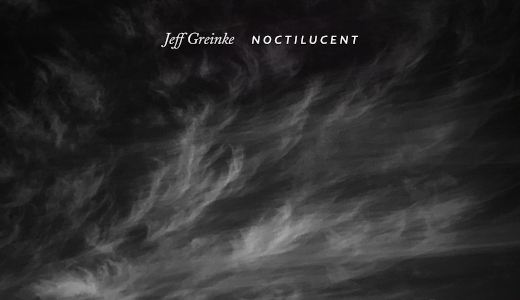




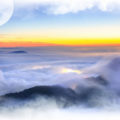
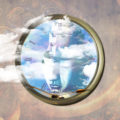
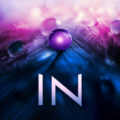

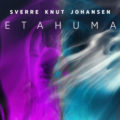
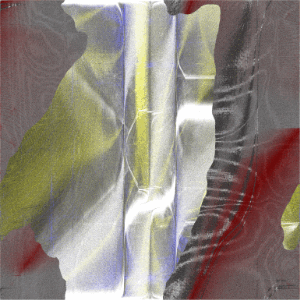


![Luke’s Anger :: Ceiling Walker EP (Love Love) — [concise]](https://igloomag.com/wp/wp-content/uploads/2025/04/lukes-anger-ceiling-walker-vinyl_feat-75x75.jpg)

![Ndorfik & madebyitself :: Solos EP (People Can Listen) — [concise]](https://igloomag.com/wp/wp-content/uploads/2025/04/ndorfik-madebyitself-solos_feat-75x75.jpg)





